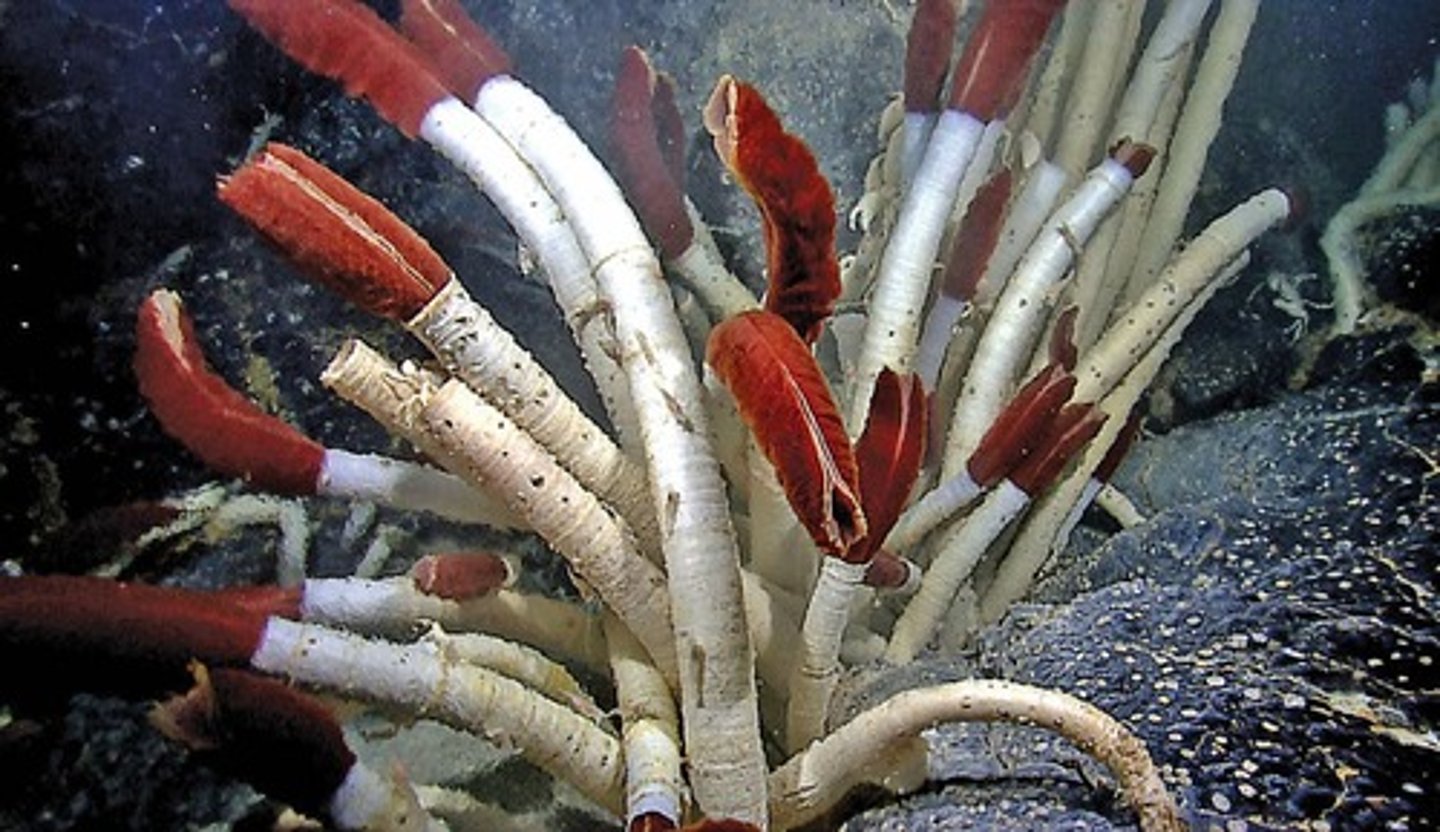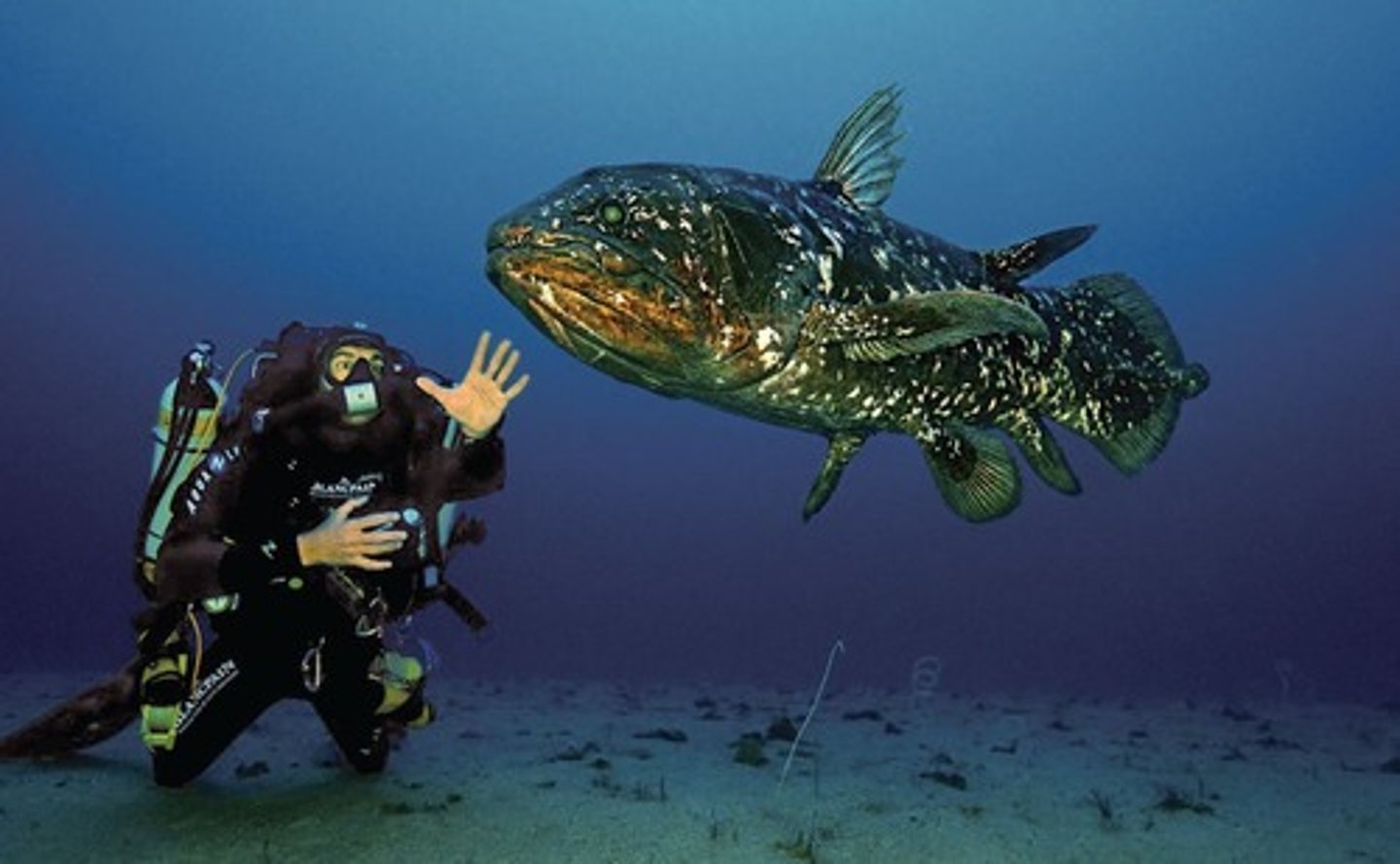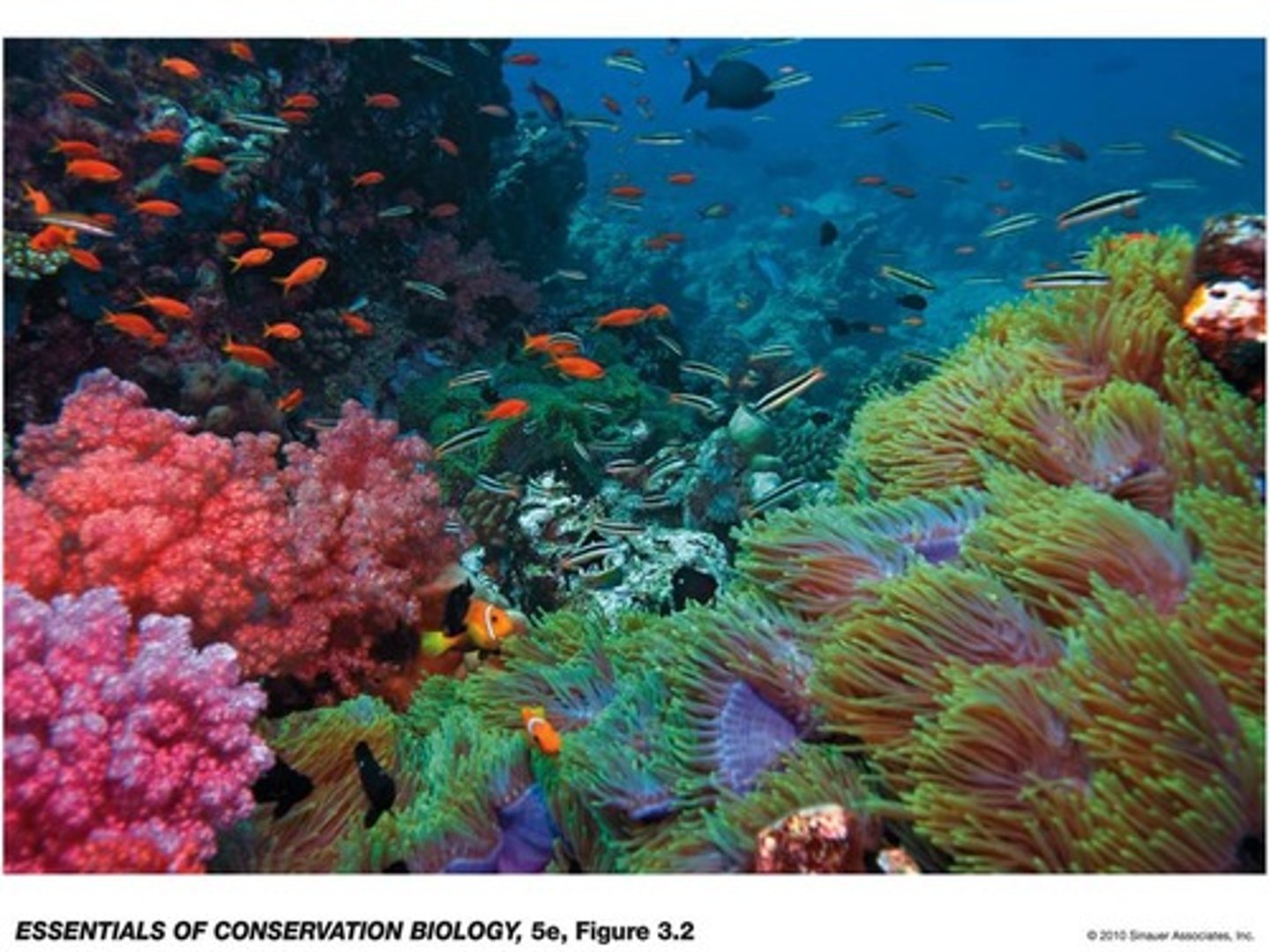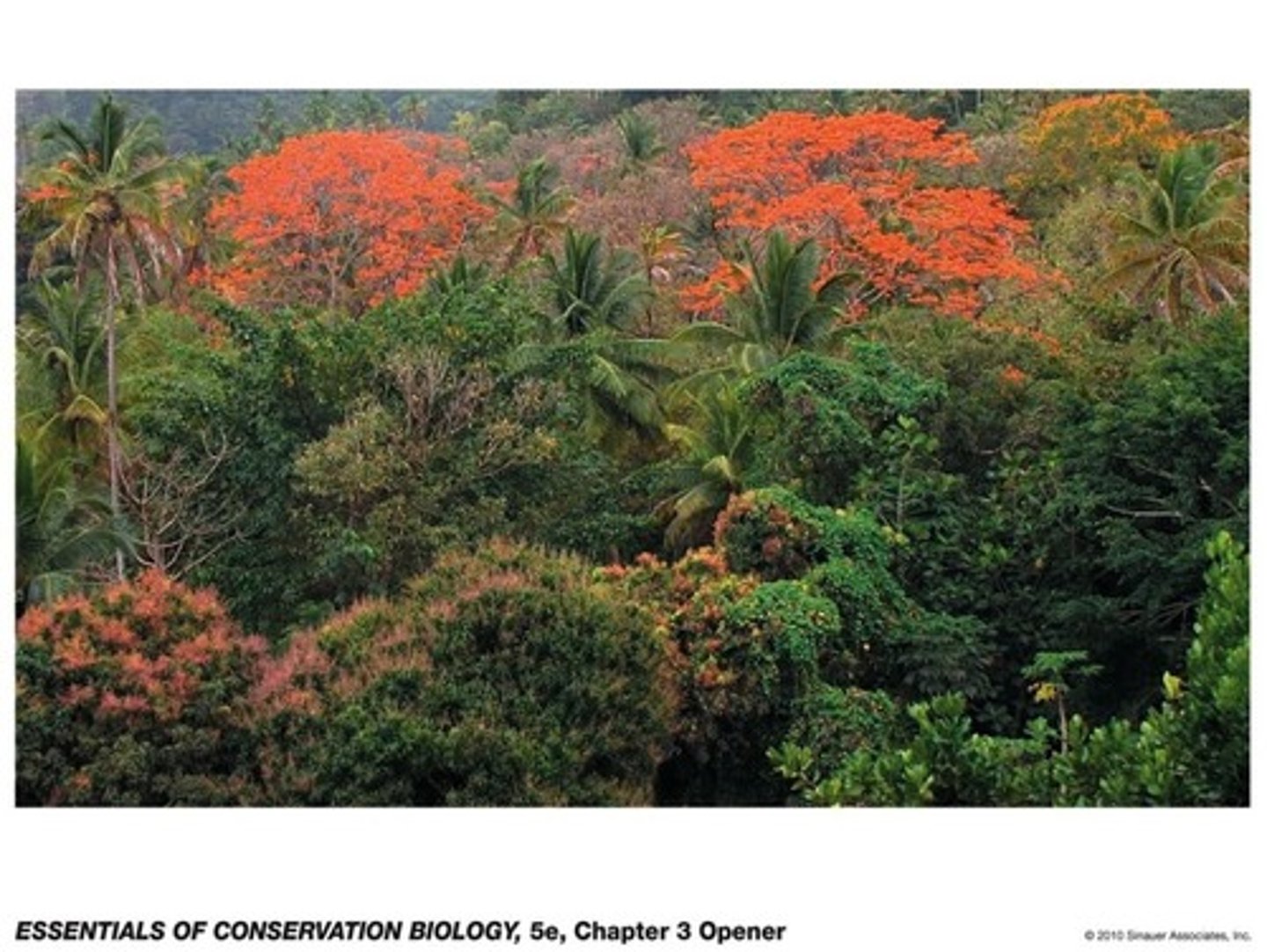Biodiversity, Evolution, and Island Biogeography: Key Concepts and Conservation
1/60
There's no tags or description
Looks like no tags are added yet.
Name | Mastery | Learn | Test | Matching | Spaced |
|---|
No study sessions yet.
61 Terms
What is the morphological definition of a species?
It focuses on the morphology of an organism, including body size, shape, and structural features, applicable to both sexually and asexually reproducing individuals.
What is a challenge of the morphological definition of species?
It relies on subjective criteria, leading to potential disagreements among biologists on distinguishing traits.
How does the biological definition of a species differ from the morphological definition?
It defines a species as a group of populations that can interbreed in nature and produce viable, fertile offspring, but does not apply to asexual organisms.
What limitation does the biological definition of species have regarding extinct organisms?
It cannot be applied to extinct organisms represented only by fossils, which must be classified morphologically.
How many eukaryotic species have been discovered and cataloged to date?
Roughly 2.16 million eukaryotic species.
What percentage of described species are invertebrates, and how many of those are insects?
Invertebrates represent about 1.5 million described species, with more than 1 million being insects.
What was the dominant view of life's origin in biology?
That all life ultimately derives from the sun through photosynthesis.
What is chemosynthesis and which organisms utilize it?
Chemosynthesis is the process by which certain bacteria convert inorganic carbon into organic carbon using energy from the oxidation of hydrogen sulfide, utilized by organisms like pogonophoran tubeworms.

What significant discovery was made about the coelacanth in 1938?
The coelacanth, thought to be extinct for 65 million years, was discovered alive in the Indian Ocean.

What does the relationship between phyla and genera diversity indicate?
There is a predictable relationship between diversity at the phyla and genera levels, allowing scientists to estimate the number of genera for less-studied groups.
Where is the world's biological diversity primarily located?
In the tropics, particularly in rainforests and oceans.
What percentage of the world's species are found in tropical rainforests?
Tropical rainforests, which cover only 7% of the world's land area, contain 50% of the world's species.
What are coral reefs known for in terms of biodiversity?
Coral reefs are the most species-rich portion of the ocean, housing 1/3 of marine fish species despite covering only 0.1% of the ocean surface area.

What factors affect species richness?
Larger habitat size, variation in climate and environment, variation in topography, and geological age.
Why are there so many species in the tropics?
Factors include a large geographic area, stability with less glaciation, favorable warm temperatures and humidity, pressure from parasites, and higher solar energy and productivity.
What is the significance of the African Great Lakes in biodiversity?
They are known for their huge diversity of fishes due to isolated, productive habitats.
What is the role of temperate forests and shrublands in biodiversity?
They are rich in species due to geological age, habitat complexity, and environmental conditions like frequent fires.
How does rainfall correlate with vertebrate species richness?
Vertebrate species richness is positively correlated with rainfall.
What is the impact of environmental conditions on species diversity?
Stable and favorable conditions promote a higher number of species, while severe conditions can lead to specialized communities.
What is the estimated number of insect species in tropical rainforests?
Between 5 to 30 million insect species are estimated to exist in tropical rainforests.
What is the significance of the Great Barrier Reef?
It is the largest coral reef system and the most species-rich portion of the ocean.
What is the relationship between habitat size and species richness?
Larger habitats typically support more species due to greater resource availability and ecological niches.
What is the primary method for estimating global species numbers?
Diversity surveys of entire regions are used to obtain estimates of species numbers.
What is the estimated total number of species worldwide?
Estimates suggest there are 5-10 million species, while 1.5 million have been described.
How many new species are described each year?
Approximately 20,000 new species are described annually.
What discovery in 1938 is considered a living fossil?
The coelacanth was discovered in the Indian Ocean.
What significant plant was discovered in Australia in 1994?
The Wollemi pine.

What type of communities have recently been discovered in tropical rainforests?
Canopy communities with diverse epiphytes and insects.
What new mammals were found in the rainforest reserve between Laos and Vietnam?
The giant muntjac, Vu Quang Ox, and a slow-running deer.
What is microevolution?
Changes in allele frequencies between populations of the same species.
What is macroevolution?
Major genetic changes that occur over long periods, generating new species.
What are the assumptions of natural selection?
1) More offspring are produced than can survive. 2) No two organisms are exactly alike. 3) There is a struggle for survival. 4) Favorable characteristics lead to higher survival and reproduction.
How does natural selection affect allele frequencies?
Natural selection selects for individuals with certain alleles, changing allele frequencies over time.
What is genetic drift?
A significant change in allele frequency due to chance events, more impactful in small populations.
What is a population bottleneck?
An event that drastically reduces population size, leading to a loss of genetic diversity.
What is the founder effect?
When a small subset of a population colonizes a new area, potentially reducing genetic diversity.
What is gene flow?
The movement of genes from one population to another, often occurring during migration.
How is reproductive success measured?
By the number of offspring an individual leaves.
What is sexual selection?
When certain individuals are chosen as mates more often, affecting gene transmission.
What is an organism's niche?
Its specific functional role in the community.
What can lead to differential reproductive rates in plants?
Factors like grazing can affect which plants reproduce successfully.
What does the niche of an organism involve?
The impact of the organism on biotic and abiotic elements of the community, and how those elements affect the organism.
How does an earthworm affect its environment?
It transports minerals, air, and water to deeper soil regions, affecting soil composition and serving as food for various species.
What is niche partitioning?
A strategy that reduces competition for food and reproductive sites by allowing different species to coexist in the same habitat.
Who developed a model of species competition?
Alfred Lotka and Vito Volterra independently developed a widely used model that includes the effects of species on each other's growth rates.
What factors increase extinction rates on islands?
Introduction of competitors, predators, and diseases by human colonists and visitors.
What happens to species extinction rates after human occupation of an island?
Extinction rates peak soon after humans occupy an island and then decline as the most vulnerable species are eliminated.
What did Jared Diamond's research reveal about species on remote islands?
The number of species may be less than predicted by equilibrium theory due to difficulties in dispersing to these islands.
How does island size affect species extinction rates?
Smaller islands have greater extinction rates due to fewer resources and less habitat diversity.
What is the relationship between island distance from the mainland and species colonization?
Colonization rates are greater for islands near the mainland than for more distant islands.
What predictions does the equilibrium theory make about species numbers on islands?
The number of species will not change over time, but the actual makeup of those species will change.
What is the species-area relationship in island biogeography?
It predicts the number and percentage of species that would become extinct if habitats were destroyed.
What happens to species numbers when 50% of an island habitat is destroyed?
About 10% of the species occurring on the island will be eliminated.
What is the 'edge effect' in habitat fragments?
A change in physical and biological characteristics of a habitat as one moves from the edge to the interior.
What are two significant anthropogenic influences on natural habitats?
Habitat fragmentation into smaller 'islands' and the introduction of non-native species.
How can island biogeography theory assist in conservation?
By predicting the effects of habitat fragmentation and designing nature preserves to maximize long-term species diversity.
What is the impact of habitat diversity compared to area in habitat fragments?
Habitat diversity may be more important than area, especially in habitat fragments.
What is the significance of genetic diversity in island populations?
Less genetic diversity can lead to increased vulnerability and higher extinction rates.
What is the expected outcome for species on larger islands?
Larger islands have lower extinction rates due to greater habitat diversity and a larger target for immigrants.
What is the role of immigration in species diversity on islands?
Immigration rates are higher for islands near the mainland, contributing to greater species diversity.
What do MacArthur and Wilson's findings indicate about species on unoccupied islands?
The number of species will increase over time until extinction and immigration rates are balanced.